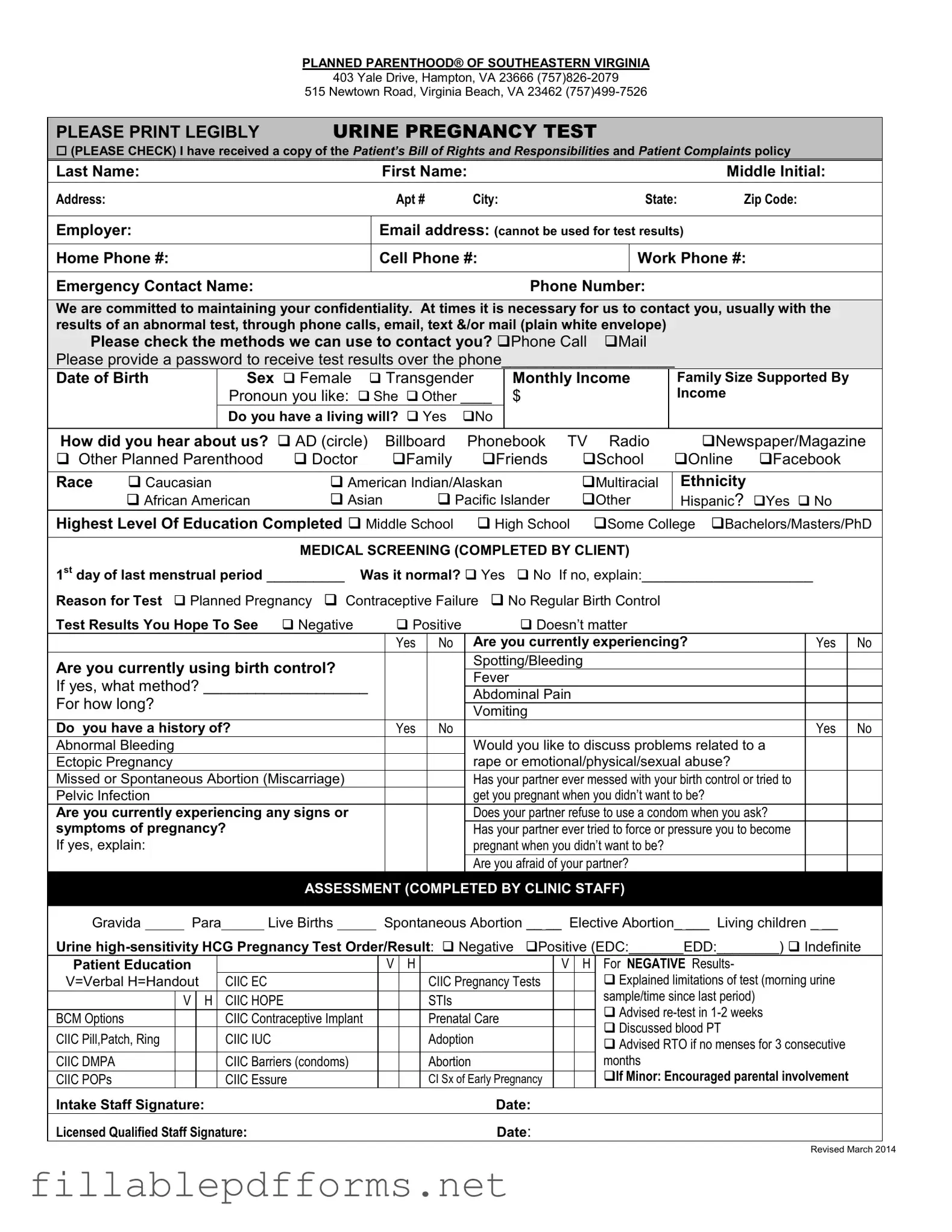When seeking reproductive health services, understanding the Planned Parenthood Proof form is essential. This form serves as a comprehensive tool designed to gather vital information from patients, ensuring a tailored approach to care. Patients begin by providing personal details, such as their name, address, and contact information, which helps the clinic maintain effective communication while safeguarding confidentiality. The form includes a section for medical screening, allowing individuals to share their reasons for seeking a pregnancy test, their menstrual history, and any current symptoms they may be experiencing. Additionally, it touches on sensitive topics, such as contraceptive use and experiences related to reproductive health, empowering patients to express their needs and concerns. The acknowledgment of health information privacy practices is also a critical aspect, ensuring that patients are informed about their rights and the measures taken to protect their personal information. By completing this form, patients not only facilitate their own care but also contribute to a respectful and informed healthcare environment.
